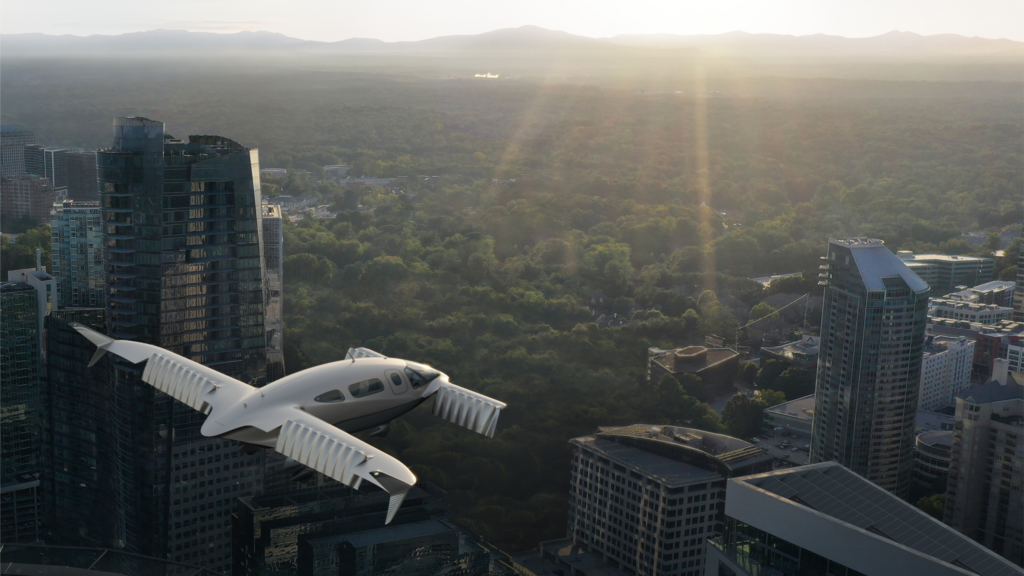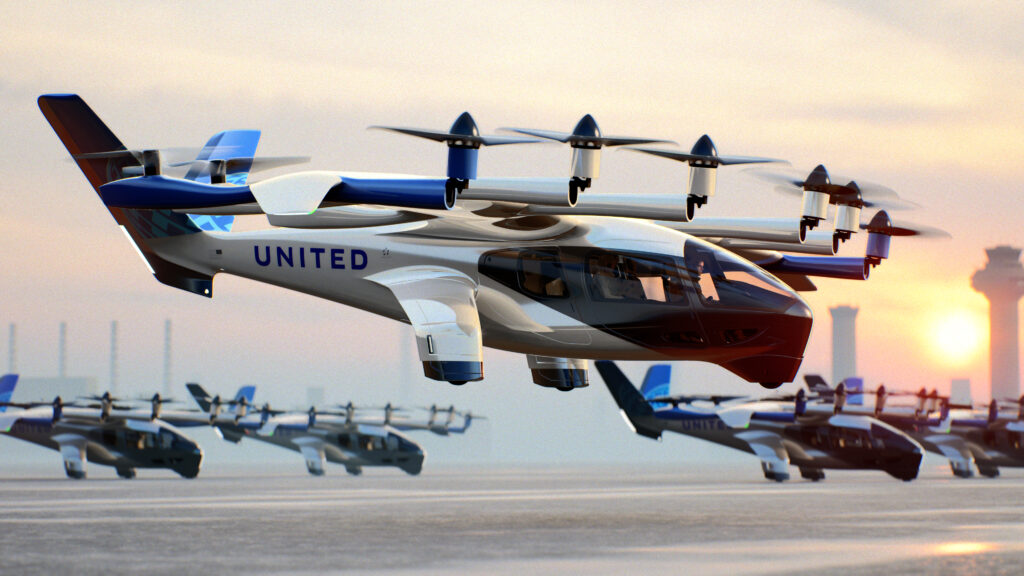Electric Air Taxis make an impact at the Dubai Air Show
Share
eVTOLs or electric air taxis, featured prominently at this year’s Dubai Air Show. In particular, on the back of its announcement that it would start services in the UAE in 2026, Archer Aviation showcased a model of its ‘Midnight’ Aircraft, with CEO Adam Goldstein giving a keynote address on day one of the event.
Other eVTOL companies in attendance included major players such as Lilium, as well as newer and emerging players such as Berlin based Nex.
Here are four key electric air taxi themes to come out of Dubai:
Electric air taxis a solution to crowded and congested cities
Archer’s Adam Goldstein highlighted that 50% of the world’s population now lives in major cities. According to Goldstein, that number is projected to grow to two thirds by 2040.
As a result, “the challenge is that our cities have become very congested.” And while Goldstein said that “we live and work in three dimensions”, the transportation grid “is still stuck in two dimensions.”
An obvious solution has been helicopters that lift commuters over the traffic , but according to Goldstein the only two major urban areas currently handling them to any great degree are New York City and Sao Paulo. The reality of helicopters being noisy and polluting has put the brakes on any further expansion.
In contrast, Goldstein said that Midnight is designed to be near-silent, addressing the noise issues associated with helicopters. It can fly at 150 miles per hour for up to 100 miles, accommodating four passengers. Safety is a priority, with multiple sets of propellers to ensure continued flight in the event of failures.
Electric air taxi networks can be implemented relatively quickly

As part of the urban air mobility sessions, Sebastian Borel, Chief Commercial Officer of Lilium, said that eVTOL networks could be a better and cheaper alternative to even building rail lines.
Borel said that an intercity train service represents an investment of €8 billion, at a cost of €30 million per kilometre, and could take ten years to come to fruition.
According to Borel however, an eVTOL network delivers the same environmental benefits as an electrified rail line (without the construction challenges), but can be implemented quickly and cheaply.
Borel said that this made eVTOLs a solution not only for city centre journeys, but also for regional travel. This comes as the existing infrastructure such as heliports can be used to begin with, with dedicated vertiports only being needed in the medium term.
The importance of partnerships in making eVTOLs a reality
Archer’s Adam Goldstein stressed the importance of partnerships in helping make his electric air taxi company one of the leaders in the field and eventually scale..
The company’s UAE plans are being supported by the Abu Dhabi Investment Office. Meanwhile Abu Dhabi’s Falcon Air Services will help implement the route between the UAE’s two biggest Emirates and economic centres – Abu Dhabi and Dubai.

Turning to the United States, where Archer intends to commercially launch in 2025, Goldstein said that key to this has been his company securing significant partnerships, including a major order from United Airlines for $1.5 billion worth of aircraft.
United Airlines is also an investor in Archer Aviation, and has already announced city centre to airport routes in Chicago (to O’Hare) and New York (to Newark).
Former United CEO Oscar Munoz, who is a Chicago resident , now sits on Archer’s Board. In the book ‘Sustainability in the Air”, he talked about the considerable advantages United’s new Chicago route will bring:
“I live 19 miles from the airport. It could take me 40 minutes, or it could take me three hours (to travel there by road). Now, we’ll be able to fly from downtown Chicago to O’Hare in under 10 minutes.”
Giant automaker Stellantis is another major Archer investor, and has worked with the electric air taxi company in building a new production facility in Georgia, which initially will be able to produce 650 aircraft a year.
A focus on the passenger experience
eVTOLs represent a completely new kind of aircraft, one that passengers and pilots are as yet unfamiliar with.
This is one of the areas being addressed by Berlin-based Nex, which unlike Archer and Lilium’s all-electric solutions, will be powered by Hydrogen Fuel Cells, to give it greater range.
The company wants to launch a cargo eVTOL by the middle of the decade, with a passenger version coming on stream by 2029/2030.
As well as showing a model of its aircraft on the German pavilion at the Dubai Air Show, Nex had a Virtual Reality headset giving visitors a sense of what it will be like for a pilot and passenger to fly from Dubai to Abu Dhabi.
Creative consultant and futurist Sarah Ben Bernou helped develop the simulation. According to Ben Bernou, eVTOLs represent an “empty space” when it comes to design, and “the opportunity of a new market.”
As a result, Ben Bernou and her colleagues talked to pilots, digested various research and came up with an initial concept which is being demo-ed via virtual reality. Ben Bernou said that feedback from consumers and pilots at events such as the Dubai Air Show will help further and refine the cockpit and cabin design in preparation for a 2029/2030 launch.


